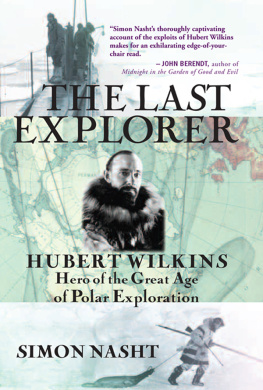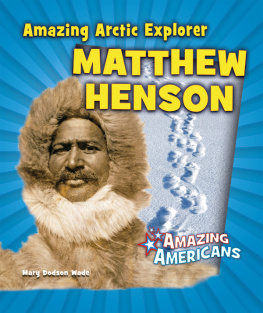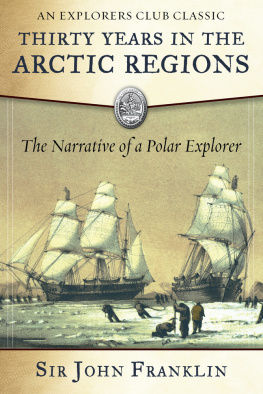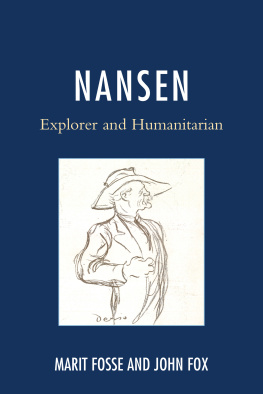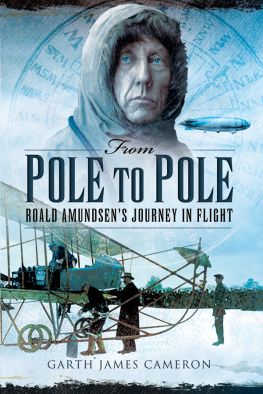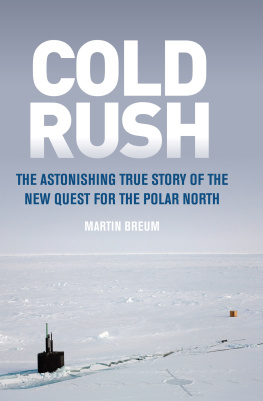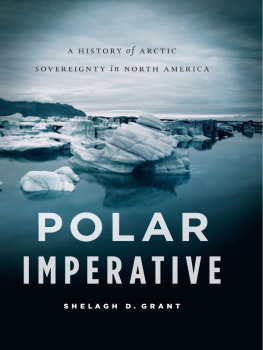A lthough this is a comprehensive biography, it is my hope that it provides a springboard for future researchers to uncover the mysteries that still need to be revealed about Miss Boyds life. There is also scope for a scholarly investigation into her scientific contributions. There is so much still to learn and she is a rewarding subject.
The research I conducted for this biography revealed a treasure trove of letters, documents, and artifacts related to Miss Boyd that are scattered across the globe. It highlighted the fact that the majority of her precious Greenland photographs and her expedition journals and logbooks are missing. In addition, although I was able to interview many people who graciously shared their personal experiences of Miss Boyd, there are still many others with Boyd stories to tell. I should be grateful if anyone with knowledge of Louise Arner Boyd photographs, logbooks, artifacts, or letters not noted in this book, or anyone with stories to share, would contact me through the publisher.
Prologue
A sheltered life can be a daring life as well.
For all serious daring starts from within.
Eudora Welty
S he gripped the ships railing tightly with both rough-gloved hands while gazing sombrely into the sprawling darkness of the frozen night. Tall for a woman, broad-shouldered, wavy brown hair tucked under a snug cap framing a handsome face with piercing blue eyes, she could easily have been mistaken for one of the crew. Beneath her feet, the Hobby juddered and jarred as it made its way through the icy waters of the Arctic Ocean. The air was a constant thrum of mens guttural voices, the clang of thick cables and ropes, the bursting swell of the ocean as the ship slammed through the seething waves, moving forward on its perilous mission. Though unaccustomed to life onboard ship, and only recently acquainted with northern waters, California native Louise Arner Boyd found herself profoundly moved and invigorated by the experience and more than a little unsettled. Whether above or below deck, she was never alone. There were always experienced seamen keeping a watchful eye on the gently bred American socialite who had somehow become an integral part of one of the most desperate quests in polar history the 1928 search for missing famed Norwegian explorer Roald Amundsen.
She caught herself as the ship yawed abruptly to starboard. What was she thinking? Only a few weeks before, she had been dressed in a bejewelled gown, dining on lobster at Claridges in London, England, and dancing the quickstep at the Ritz. And yet here she was, wearing stiff leather boots and rough woollen trousers that itched like the dickens, standing unsteadily on the slippery bow of a ship sailing northward. There was so much for her to absorb so much that the male crew members just took for granted. Louise spent hours poring over detailed nautical charts, checking the Hobby s position with a sextant, and quizzing the officers; more than might be expected of a respectable society lady of a certain age. But if she was going to contribute and really make a difference to this expedition, then she had to learn, and quickly, too. As Hobby s hull rose and fell rhythmically, she mused to herself that this was not the trip to Greenland that she had originally intended. Who knew what winding, dreary path her life would have taken if the Amundsen tragedy had not intervened and disrupted her travel plans? As unlikely as it seemed, Miss Louise Arner Boyd of San Rafael, California, was never supposed to be discussing weighty matters with naval commanders on the high seas, recognized by all onboard as one of the leaders of a daring rescue mission of international significance.
During that summer of 1928, far above the frigid Arctic Circle, the weathered schooner Hobby , Louise, and the Norwegian crew, including Captain Kristian Johannesen and Captains Mate Astrup Holm, were sailing north in search of one of the greatest explorers of all time. Renowned for his bold exploits, geographic contributions, and endless brushes with death, Roald Amundsen had inexplicably vanished on June 18 during an effort to rescue the Italian explorer Umberto Nobile, who had himself gone missing in the airship Italia on its return flight from the North Pole. A Norwegian journalist noted tersely in a local Oslo paper, Its a terrible thought that the rescue of one explorer might end with the death of another.
Louises first trip north had been an idyllic pleasure cruise a few years earlier. She had sailed with some intrepid friends around the rugged coast of Spitsbergen, Norway, and farther north, close to elusive Franz Josef Land. It was the fulfillment of a childhood dream. During her earlier trip to Spitsbergen, she had been overcome by joy at her first sight of the Arctic Ocean. She was entranced by the deepening silence late at night that was broken only by the heaving and jostling of the massive icebergs, the harsh crispness of the cold air that seared the lungs, that sense of absolute oneness with the primal core of the world. It stirred her blood just to think of it. To be honest, it was also the thrill of the mighty polar bear hunt that attracted her. Like many adventurous women of her class, she craved the chase, the adrenalin-pumping rush that comes from sighting, stalking, and shooting one of the most fearsome beasts on earth. And she desired the kill as much as any man, when the blood-lust was upon her and the animal fell dead beneath her still-smoking rifle. But more than that, she went north because she wanted to know what was out there. She had to see it for herself. But leading a polar expedition and joining the ranks of fellow American polar explorers such as Elisha Kent Kane, Robert E. Peary, and Richard Byrd? Well, that happened by coincidence or perhaps it was her destiny.
Just as the ship left Troms harbour at the start of the rescue mission, newspaper headlines heralded, Woman Joins Arctic Search Miss Boyd To Assist Rescue and Miss Boyd Confident of Rescue Outlook. Californian Going in Search of Amundsen Is Huntress and Business Woman. Were they really referring to her a forty-year -old sophisticated woman-about -town? Forty! It had taken her quite by surprise.
She thought long and hard that year about what she wanted out of life. She wasnt married and had no children no ties at all. Her mother and father had passed away a few years earlier and shed lost both of her brothers when she was young. No family then to judge or criticize or offer loving guidance and support. She was quite alone. There was no one to really care about what she did so she just went ahead and did it. In the spring of 1928, her plans to hire a ship and travel north of Norway once more were well under way. But fate intervened when Amundsen was lost. Louise thought about the people closest to her and the pivotal events leading to this critical junction in her life.
PART ONE
An Unlikely Heroine
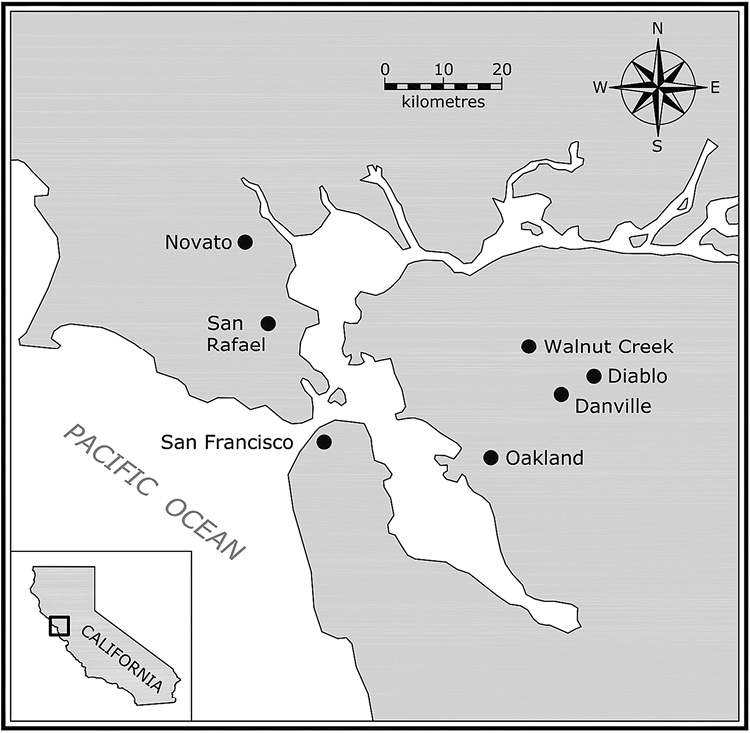
Central California, where Louise Arner Boyd lived.
Chapter One
An Adventuress Is Born
To strive, to seek, to find, and not to yield.
Alfred, Lord Tennyson
S he always considered herself to be a true-blue American girl. Sheltered from the gritty hardships of life, Louise Arner Boyd was set free as a child to explore her world. Independent. Curious. Adventurous. Her wealthy parents, Louise and John Franklin Boyd, shuttled her and her older brothers Seth and Jack between lavish homes in San Rafael in Marin County near bustling San Francisco and rural Diablo near Danville in Contra Costa County, California. All the wonders of country and city life were theirs. When balmy June days arrived, their noisy household was packed up and shipped off to their summer home, where life proceeded at a more leisurely pace. Nestled into a sprawling pastoral estate overlooked by Mount Diablo, the Oakwood Park Farm hummed with the comings and goings of busy adults and rambunctious children. Peopled by childhood playmates, her fathers boisterous business colleagues and government associates, and chattering society women with whom her mother worked on philanthropic events, this is where her bold spirit developed and flourished. Unshackled from the constraints of citified ways, Louise responded joyously.


